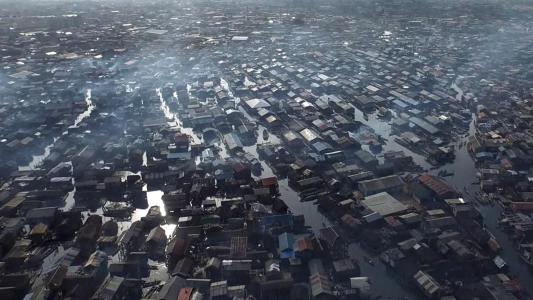Could solar-powered blimps (low-altitude airships) lead to a new era of enhanced internet connectivity for sub-Saharan Africa?
Tests are underway above the Tanzanian islands of Zanzibar and Pemba, where two helium-filled tethered balloons are providing browser and email access. The Low-Altitude Platform Stations (LAPS) float 300 metres high and use 3G and 4G frequencies to provide a signal range of about 70 kilometres (km) – enough to give basic internet coverage to most communities on the islands.
Blockchain-based telecommunications company World Mobile is partnering with balloon manufacturer Altaeros to test the technology. If successful, the balloons could be rolled out across Tanzania and 12 other countries in sub-Saharan Africa.
The LAPS can endure wind speeds of up to 150km per hour and stay airborne for around two weeks before needing to refuel. Other blimps will provide coverage during downtime to avoid service disruption.
At ground level, a supporting network of local Wi-Fi nodes will provide fast download speeds with enough bandwidth for gaming, streaming and online business activities.
“Non-terrestrial networks, including low-Earth orbit satellites, are a great technology for geographically remote regions,” says World Economic Forum Head of Telecommunications Isabelle Mauro. “Non-terrestrial technologies should become an integral part of hybrid solutions for ensuring timely quality access to the internet.”
Internet high-flyers
Previous attempts to launch similar internet delivery systems in remote areas have met with little commercial success. The Loon project by Google’s parent company Alphabet deployed balloons and Facebook’s Project Aquila used solar-powered drones, but both have now halted operations.
The system on trial in Tanzania offers a new approach, however, replacing high-altitude systems with a low-altitude and hybrid land-air model. It aims to deliver reliable online access not only to remote areas that are unconnected but also to those with slow, weak or intermittent signals.
Web access is restricted in many parts of sub-Saharan Africa by poor network coverage, high data costs and limited familiarity with the internet. Only around a fifth of Tanzania’s population uses the internet, according to the World Bank.
And while network coverage has been growing steadily across sub-Saharan Africa, in 2019 less than 30% of the continent’s population had online access.
Closing the digital divide
Less than 10% of households in low-income countries are fixed broadband subscribers, compared with 70% in middle-income and close to 90% in high-income countries, according to the World Economic Forum’s Accelerating Digital Inclusion in the New Normal report. And slow download speeds restrict more than half of subscribers in low-income countries, limiting prospects for online business activity and economic development.
But connectivity is only part of the challenge. Weak digital literacy is one of the biggest barriers to internet access for remote communities in developing countries.
A recent World Bank survey of more than 20 low- and middle-income countries in Africa, Asia and Latin America found that almost 70% of people in these regions don’t understand what the internet is or how to use it. This digital skills gap leaves small- and medium-sized enterprises particularly disadvantaged, yet they account for 90% of businesses worldwide and drive half of GDP in emerging markets.
The use of blimps to boost internet connectivity could be an important step towards closing the digital divide. But efforts to connect remote areas must go hand-in-hand with education programmes that increase digital skills and ensure affordable internet access for all.
Republished with permission of the World Economic Forum. Read the original article.






